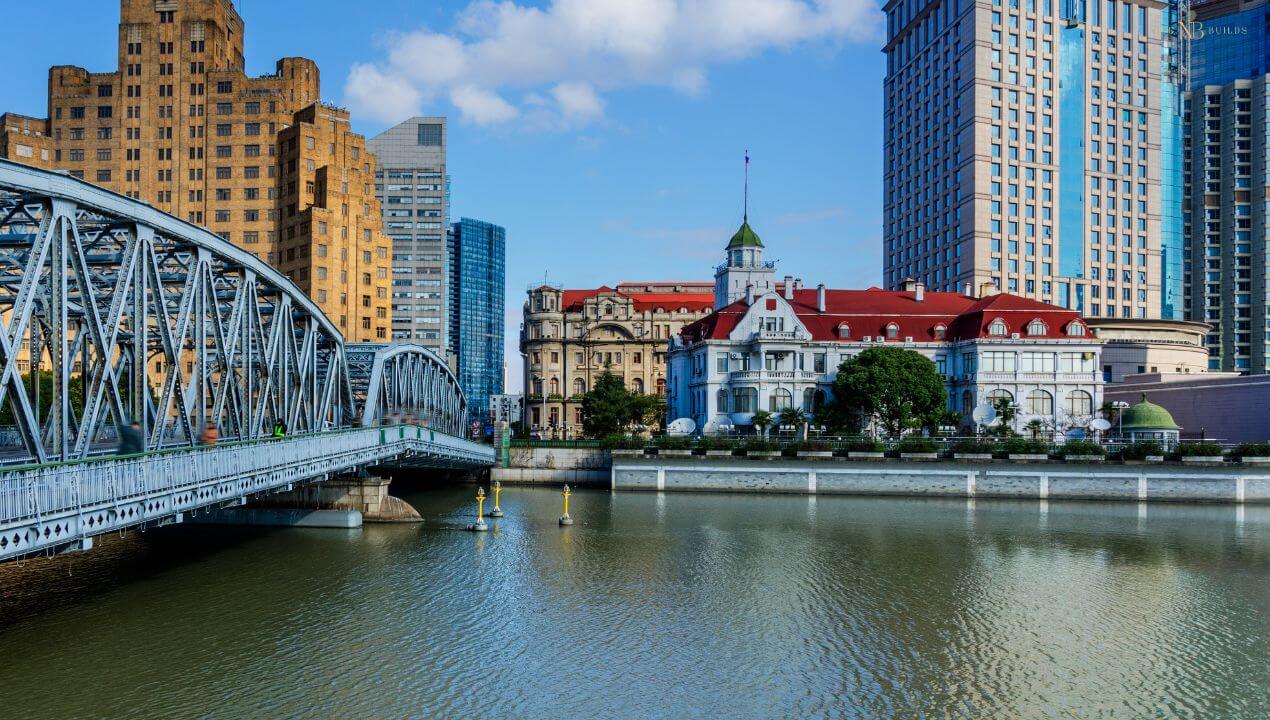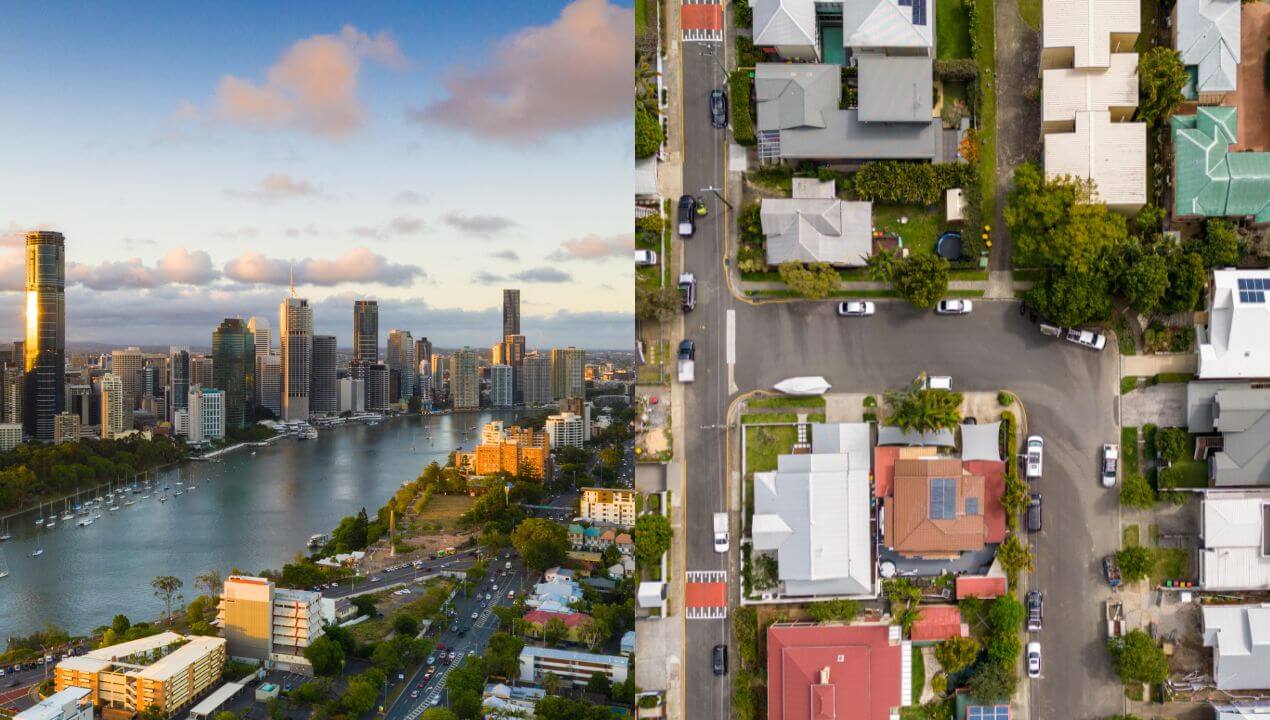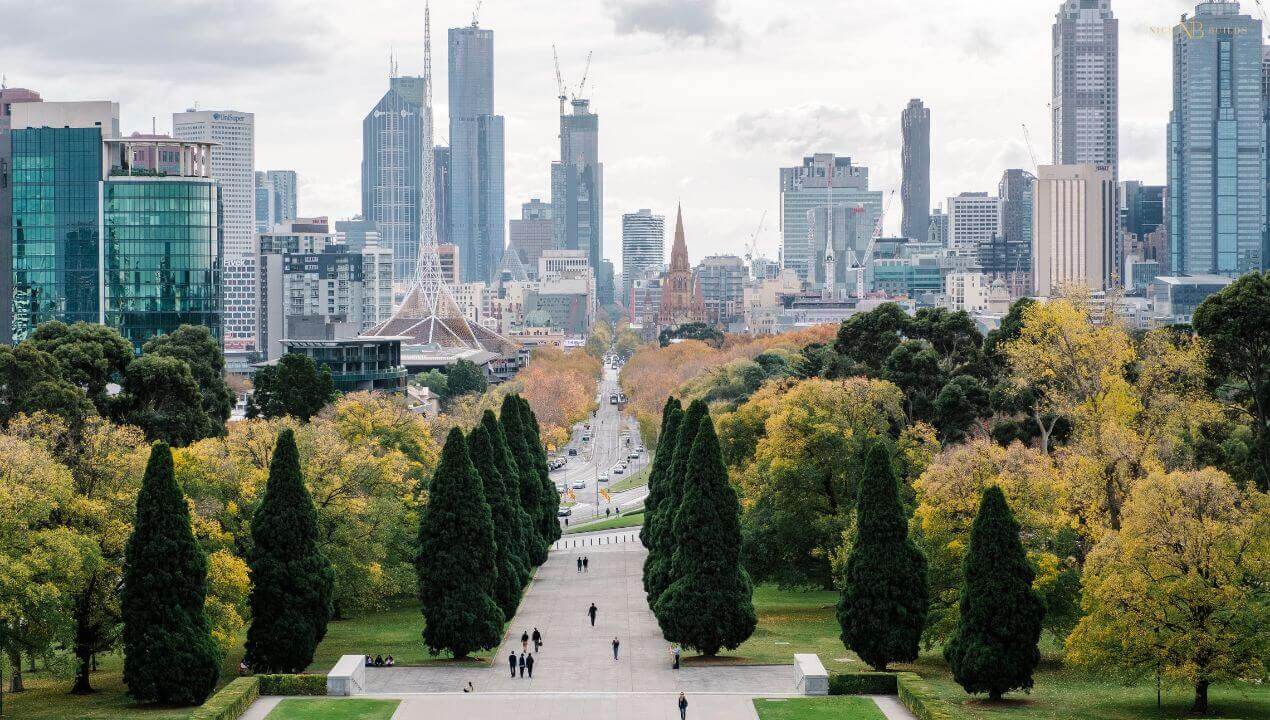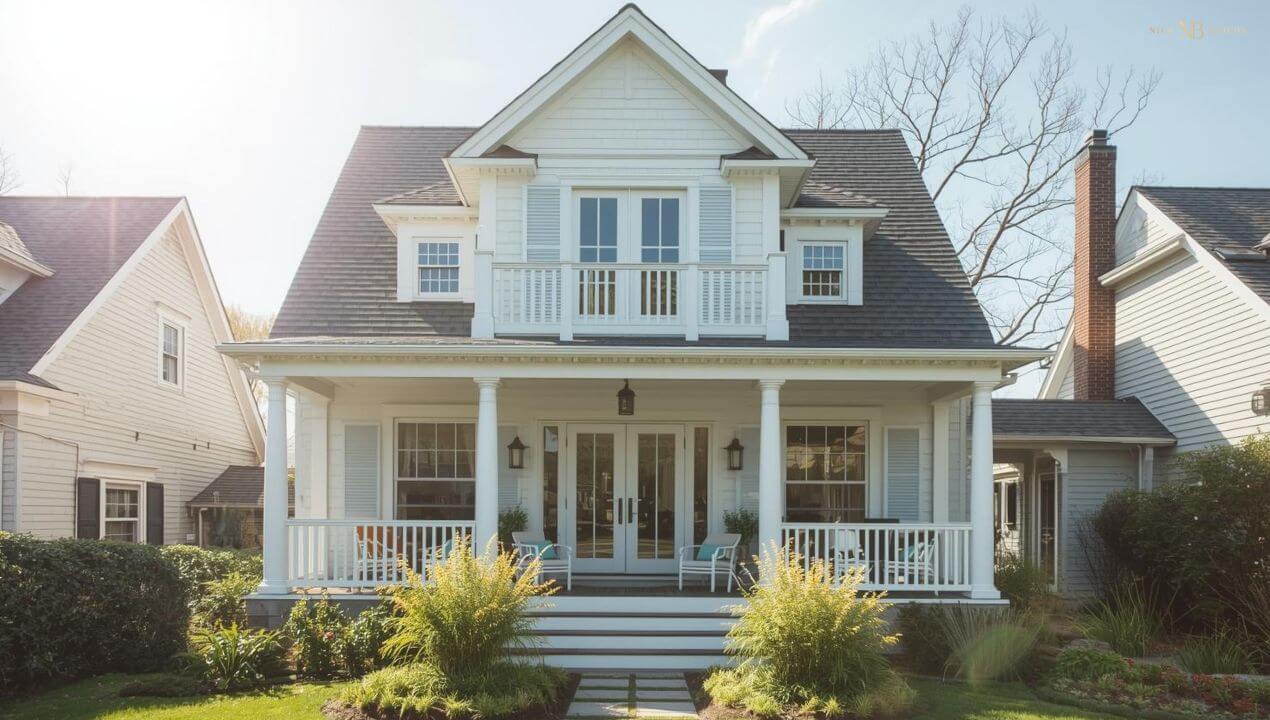People’s environments, both psychological and physical, shape the contours of their personality. Living anywhere has a cause and an impact; weighing your options can help maximise positivity and eliminate distress.
For instance, the best suburbs for families in Brisbane offer a balanced lifestyle. They’re vibrant yet not overwhelmingly so, provide a sense of tranquillity and remain conveniently connected.
Whether to live in the hustle of the city or the serenity of a quiet suburban home can be a difficult decision to make. There isn’t one correct answer; it is a matter of what you’re looking for that can help determine what’s good for you.
Brisbane is now one of the most sought-after cities to live in Australia. Statistics show that almost 90% of the Australian population resides in urban areas, and cities like Brisbane, where suburban charm meets city convenience.
However, Brisbane offers the best suburbs for family-friendly homes. With urbanisation having taken its ascending steps almost 250 years ago, marking the beginning of the industrial age, people today crave the air of the ancient.
Several suburban areas in Brisbane are conveniently close to the Brisbane CBD, offering the promise of solitude and security, with convenience at a feasible distance.
City vs Suburb Living: Factors to Consider
A city is a relatively large town, both in size and population; it’s a metropolitan territory that is often marked as a financial and resourceful hub. Cities are associated with wide, enormous skyscrapers, urban pleasures, convenience, several public transportation options, and large neighbourhoods.
Suburbs are residential districts that surround a city. They comprise close-knit communities, natural landscapes, lower population density, and a more palatable lifestyle.
Although cities cover a bigger area, homes and public establishments are congested, and open lands are scarce. However, the countrysides offer larger land plots and fewer crowds.
Brisbane suburbs are the best choice for families, from Kenmore to Alderley, they’re exceptionally rated for their facilities. These Suburbs are not only close to the Brisbane CBD but also to medical institutions, schools, and recreational areas.
The contrasts between cities and suburbs are not subtle but glaringly obvious, and such differences are emphasised by what the areas deliver. There are several stages to building your dream home, and it’s both terrifying and exciting, so choosing where to live is basically irrefutable.
Population
The population density is higher in urban areas compared to the neighbouring towns, and there, motivations are apparent. Suburban residents go the extra mile for the comfort and convenience that cities inherently provide. The population is a primary factor affecting competition, facilitation and ultimately participation.
However, suburban life often benefits from its smaller population; fewer crowds result in less traffic and overall peace and privacy, perfect for raising a family.
Resources
Several resources are more conveniently available to city residents because everything is nearby, and opportunities are within arm’s reach. Whether it be health resources, public transportation, jobs, or even education, cities boast the best, raising the standard of living.
Certain suburbs could land closer to such aids, but they’ll never be close enough. They are residential areas and have fewer resourceful establishments than cities do.
Transportation
People in the suburbs often travel by car, and commute distances can be longer. It’s fairly necessary to own a vehicle to ensure an easy commute. When it comes to transportation, city residents have more travel options and flexibility than the suburbs provide.
Lifestyle and Entertainment
It’s easy to assume that suburbs, away from the city centre, might lack entertainment options, but that’s far from the truth. Instead, unique recreation is what suburbs tend to do best. From vibrant fairs to nightlife in the serene, within the bounds of solitude, it’s easier to find a sense of community.
Cities thrive in diversity, which is why there’s always something happening. Every day is a grind, and the nights refuse to rest. The hustle and bustle of the city is a sight to see.
Safety and Security
Generally, most suburban areas are known to have lower crime rates compared to various risky localities around the city. Suburbs flourish with a sense of community and maintained privacy, which contributes to a peaceful way of living.
City dwellers are of all types and backgrounds, there’s immense pressure, competition and transformation happening every passing minute. This fast-paced nature could influence more crimes.
Cost of Living
Living in the city can be a lot more expensive compared to life in a suburb. It’s because city areas have a high demand for housing, from rent to groceries to construction and maintenance costs, everything is maximised, which makes the whole market fluctuate around the city.
On the fringes, life can be affordable. Sure, there are exceptions, but considering the space and comfort, suburbs have a higher chance of being worth your buck. Apart from home finances, the rest of the budget remains largely stable.
Find out the cost to build a house in Brisbane.
City and Suburban living: Explore the pros and cons
Conclusions are best made through comparison. It is essential to understand the benefits and deficits that arise from desiring a particular experience. Taking careful measures becomes even more critical when making decisions about details as important as your home.
City life

If you prefer speed, variety and excitement, city life is what calls for you. Perfect for individuals with a snappy drive who thrive under pressure and love the steady buzz.
Pros of city living
- Convenience and accessibility: Everything is easily available when you live in a city. Transportation is flexible, and facilities are in abundance.
- Diversity: Cities have a larger population in comparison to the countryside. It is a melting pot, thus the variety. Rich cultural exchange, meeting new people and social interactions are encouraged.
- Opportunities everywhere: Cities are an educational and corporate hub, offering job opportunities and university slots, where information is quickly circulated and positions are easily filled.
- Vibrant culture and active lifestyle: You would never get bored living in the city. If you’re someone who likes to move around, experience new things and live in the moment, the city never stops and neither should you.
Cons of living in a big city
- Higher cost of living: Cities around the world face massive problems due to inflation. With home and rent prices rising, day-to-day living costs have also increased.
- Crowded and noisy: Given the population, crowds cannot be eliminated. Quiet and empty areas can be hard to find.
- City limits space: City homes are small, and empty spaces are scarce. The rising population contributes to the congestion.
- High crime rate: Certain city areas can be risky and lack security; crime rates are typically higher than in the fringes.
Living in the city? Find out whether to renovate or rebuild your home for maximum market returns.
Suburban Lifestyle

The suburbs are perfect for growing families and individuals who value privacy. With tighter communities and larger lands, your home-building dream is only a contract away.
Pros of a suburban life
- Improving quality of life: There have been active efforts to enhance the quality of life in the suburbs. Facilities made affordable and accessible for suburban residents are helping build convenience. Living in the suburbs guarantees peace, and you could routinely spend time outdoors.
- Communal and family-friendly spirit: Suburbs are tight-knit communities, perfect for growing families seeking a wholesome atmosphere. Holland Park, which is primarily residential with some commercial areas, Camp Hill, with its stunning array of mountains, and Paddington, to the west of the Brisbane CBD, are some vibrant and incredible places to live in Queensland.
- Low cost of living: The outskirts offer more spacious and larger homes compared to the city, and often at a more affordable price. You could afford a greater and well-designed home in Brisbane for the amount you would pay for a much smaller one in major cities like Sydney.
Cons of suburban living
- Limited access: Although various suburbs in Brisbane are within close distance to the Brisbane CBD, providing generous access, the comfort of convenience is indeed low in the suburbs. Mundane tasks do take an extra mile at the outskirts.
- Longer Commute: The primary mode of commute is by car; therefore, it becomes essential to own a vehicle, as most commutes cannot be made on foot. Options are available, but relying on public transport can be limiting.
- Fewer opportunities: Suburbs can offer basic amenities; they’re not rural, but it’s also true that compared to the city, the opportunities are a lot fewer. There’s also less competition because there isn’t much to compete with in the first place. For someone with a drive, it’s a downside.
Protect your homes from pests, leakage and rot! Learn more about roof eaves on homes to add an aesthetic and functional touch to your abode.
Best places to live in Queensland for families
Building your dream home? Queensland is the place for you. If you appreciate commerce, the state is an incrementally expanding market. If you prefer the sound of cracking waves and fresh air, mountain peaks and modest elevations, nature at its finest, Queensland is still the place.
Compared to metropolitan areas like Sydney or Melbourne, Queensland offers a much affordable housing solution. A growing economy with residential areas, a laid-back life cocooned in safety and stability, is what awaits you in Queensland.
Brisbane
Brisbane, the state capital, is a perfect blend of metropolitan charm and suburban peace. Its thriving job market and strong economy are just a few of its highlights.
Brisbane flourishes in warm conditions with roughly 250 days of sunshine annually, a subtropical climate that’s perfect for outdoor activities.
The Brisbane CBD is a bustling hub of city gardens, skyscrapers, restaurants, markets, and museums, located on the northern bank of the Brisbane River. Whatever you need is readily available.
Lifestyle preferences can heavily influence the costs, but several good suburbs in Brisbane offer the finest plans to build your home. A perfect fit for families that require proximity to schools and universities, without compromising on privacy and safety.
Townsville
Situated on the northeastern coast of Queensland, Townsville is another world-class area. Rich cultural heritage and a population of over 180,000 people, it is the largest city in Northern Queensland and the second largest in the state.
Schools, transport and health facilities are abundant. The Townsville highways link the city to other major parts of Queensland, and there are easy bus and rail networks available.
Gold Coast
As the name suggests, the Gold Coast is renowned for its stunning beaches, vibrant lifestyle and a diverse range of activities. The city is a perfect blend of coastal life and urban convenience. Hampton style homes that complement the suburbs’ nautical charm are popular within residential areas.
The Gold Coast is a trendy cosmopolitan, perfect for families seeking diversity and a fresh pace to start their growing families. Compared to major cities, the Gold Coast offers an intended, more laid-back perspective on life.
Sunshine Coast
The community on the Sunshine Coast is thriving, a growing economic stance thanks to budding tourism and investments in infrastructure. Families can enjoy a relaxed lifestyle with a stable future for their kids.
The neighbourhood is friendly, safe, roomy and has plenty of schools around. The coast maintains professionals in several industries around the city, and employment opportunities are plentiful.
Driven by increasing local and interstate demand, the housing market in the Sunshine Coast is flourishing. Amenities range from shopping centres, hospitals, schools, restaurants, and local transportation facilities.
Best Suburbs for Families in Brisbane
Alderley
Alderley is a suburb located in Brisbane’s north, widely regarded as a family-friendly residential area. It offers a strong sense of community, supported by active local groups, parks and family-oriented amenities. With excellent public transport options, including both train and bus services, it offers easy access to the Brisbane CBD and surrounding suburbs. Alderley also features a range of local shops, playgrounds, walking paths and reputable schools, making it an ideal choice for families seeking convenience and a welcoming neighbourhood.
Kenmoore
Kenmoore is a versatile suburb perfectly suited for families, consistently recognised as one of Queensland’s most livable areas. Situated approximately 10 KM southwest of the Brisbane CBD along the Brisbane River, it boasts a peaceful, leafy setting while still providing top-notch accessibility. The suburb offers a variety of local shopping centres, extensive walking and cycling trails with well-maintained parks and reliable public transport. Kenmore is also known for its strong selection of both public and private schools, making it particularly attractive for families with children.
Bulimba
Bulimba, located just 4km from Brisbane’s CBD on the city’s inner east, is one of the area’s most sought-after riverside suburbs. With its charming blend of classic Queenslander homes, vibrant village atmosphere, and a thriving shopping precinct, Bulimba is an ideal balance of lifestyle and convenience. Families especially rejoice in the suburbs, riverfront parks, boutique shops and access to quality schools and childcare. Also serviced by bus and ferry routes, Bulima provides a smooth transition into the city.
Life on the ridge of a large skyscraper or relaxed evenings overlooking coasts and hills on your balcony, the choice is entirely yours. As an individual or a growing family, your decisions will resonate for years to come. Interested in building your dream home in Brisbane? Contact one of the best home builders in Brisbane, Nice Builds, today!
Suburbs could be a compromise, but barely in Brisbane. Bulimba, Paddington, and Alderley are only a few of the best areas to live in Brisbane for families. They’re a solid investment, offering both the bliss of privacy and security with urban facilities that the modern person desires.
Whether you ditch the noise of the city for the peace the suburbs provide or refuse to compromise with inconvenience and opt for the grind in the city, places in Queensland are absolute. Explore our home packages, curated by professionals to find the best homes in the suburbs of Brisbane.
FAQs: City vs Suburb
What are city and suburban people like?
Where you live defines what you are. City dwellers are tenacious, sharp and active people who are always looking to drive momentum. They enjoy the sounds of the city and don’t mind losing space in the congestion of people.
Suburbans value peace; they prefer stability over spontaneity. Family and community-oriented mindsets are common in suburban neighbourhoods.
How many suburbs are in Brisbane?
Brisbane suburbs are a harmonious mix of urban accessibility and natural charm. There’s a reported number of 190 suburbs on the Brisbane mainland and four on Moreton Island.
Is it worth living in the suburbs?
Suburban homes are an ideal choice for families or individuals looking to unwind and settle. Affordable home options, airy designs, and healthy and friendly communities make every one of your investments worthwhile.
What suburbs are close to Brisbane CBD?
In terms of distance, there are several suburbs close to the Brisbane CBD, inner-city suburbs like Herston, Paddington, and Windsor within a 5km range, and at roughly 10km we have Norman Park, Ashgrove and Bardon.
Suburbs like Kenmore, Holland Park and Carina Heights, known for being safe and ideal for growing families, are also a reasonable distance from the Brisbane CBD






